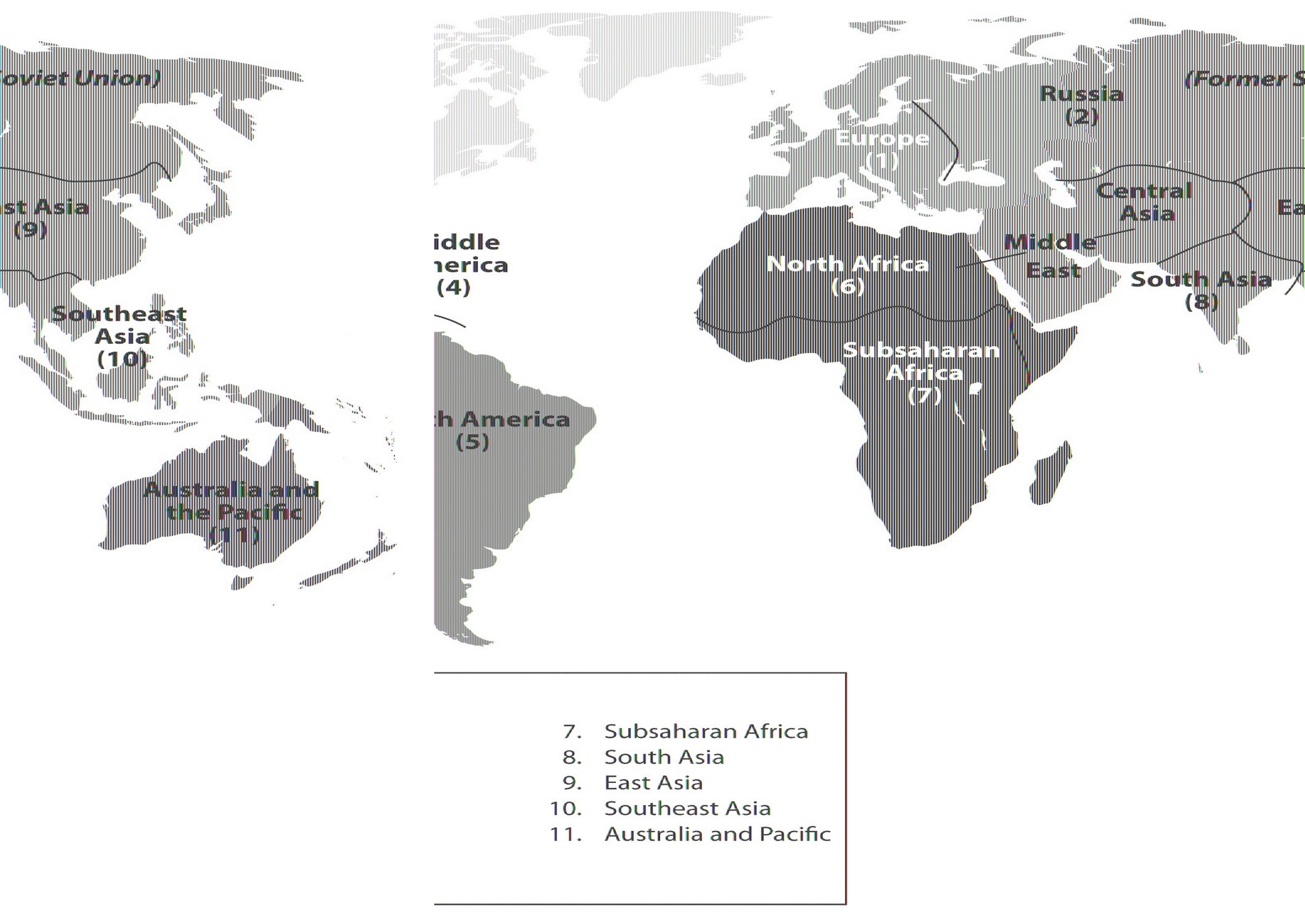
World regions are ways of grouping countries or territories based on their geographical, cultural, historical, or political characteristics. There is no definitive or universally agreed-upon classification of world regions, as different organizations or disciplines may use different criteria or methods to divide the world. However, some common ways of defining world regions are based on continents, United Nations geoscheme, World Bank regional classification, or cultural and linguistic similarities.
One of the simplest ways of defining world regions is based on the six inhabited continents: Africa, Asia, Europe, North America, South America, and Oceania. However, this method has some limitations, as some continents are very diverse and heterogeneous, such as Asia and Africa, while others are very small and isolated, such as Oceania. Moreover, some continents are not clearly separated by natural boundaries, such as Europe and Asia, which are sometimes considered as a single continent of Eurasia.
Another way of defining world regions is based on the United Nations geoscheme, which divides the world into six continental regions, 22 geographical subregions, and two intermediary regions. This method was devised by the United Nations Statistics Division (UNSD) based on the M49 coding classification, which assigns numerical codes to countries and territories for statistical purposes. The UNSD geoscheme is not based on political or cultural affiliation, but rather on geographical proximity and similarity. For example, the UNSD geoscheme includes Cyprus and Georgia in Western Asia, even though they are culturally and politically closer to Europe. The six continental regions of the UNSD geoscheme are Africa, Americas, Asia, Europe, Oceania, and Antarctica.
A third way of defining world regions is based on the World Bank regional classification, which groups countries and territories according to their income level and geographical location. The World Bank regional classification is mainly used for economic and development analysis and policy making. The World Bank regional classification consists of eight regions: East Asia and Pacific, Europe and Central Asia, Latin America and Caribbean, Middle East and North Africa, North America, South Asia, Sub-Saharan Africa, and High-income OECD members.
A fourth way of defining world regions is based on cultural and linguistic similarities, which may reflect historical ties, religious beliefs, ethnic identities, or shared values. This method is more subjective and flexible, as different criteria or perspectives may lead to different groupings. For example, some cultural and linguistic regions are the Arab world, the Francophone world, the Anglophone world, the Hispanic world, the Slavic world, the Nordic countries, the Balkans, the Commonwealth of Independent States, and the European Union.
In conclusion, world regions are useful ways of organizing and understanding the diversity and complexity of the world. However, there is no single or definitive way of defining world regions, as different methods may have different advantages and disadvantages, depending on the purpose and context of the analysis. Therefore, it is important to be aware of the criteria and assumptions behind each method, and to recognize the diversity and dynamism within and across world regions.
